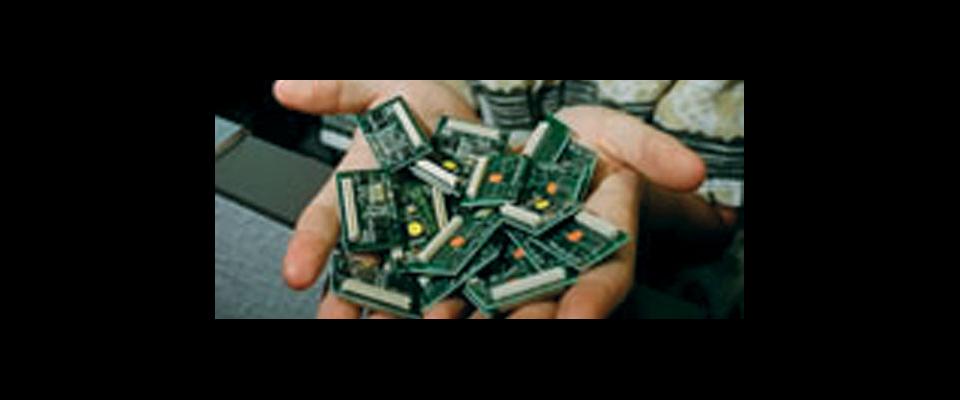Tiny new electronic sensors outsmell our noses
What you can’t smell can hurt you. That’s the idea behind electronic noses—sensors that detect harmful gases, such as ammonia or carbon monoxide, at much lower levels than the human nose can. Commercial e-noses have been used for years in the food industry, in hospitals, and on NASA space shuttles. But beyond the common household smoke detector, consumers have experienced little of their benefits.
Vivek Subramanian, an associate professor of electrical engineering, says the reason for their limited use is that e-noses have been too expensive to make and too clunky to use. The Cyranose is an example: This e-nose can sniff out millions of different chemicals, but it’s the size of a large walkie-talkie and costs $8,000. With downscaling in mind, Subramanian, along with three graduate students, set out to develop smaller and cheaper e-noses.
Imagine milk cartons that sniff out their own spoiled contents and plastic wrap that detects E. coli and other bacteria in supermarket meat. Also, pill bottles that could determine when prescriptions expire. And wine bottles that could alert drinkers to wine gone bad. Those were the goals Subramanian had in mind when he set out to rewire the industrial e-nose.
“We wanted to exploit the same idea that exists in human noses,” Subramanian says, “which have a whole array of different nose cells wired together to get a unique signature. But that’s really expensive to do.” So the research team hit upon an idea: Silicon chips are the bulkiest—and most expensive—factor in electronics. Why not replace the e-nose chips with plastic circuits, which are cheap and easy to make? This is the cutting edge of electronics, Subramanian says. These circuits can be printed onto paper, plastic, or cloth, which can then be molded into almost any shape or form.
Subramanian and his team got to work designing a specialized inkjet printer that could serve their needs. In this case the “ink” is actually a conductive plastic, and the different printer heads lay down individual sensors that combine to create highly specific signatures.
For this research, Subramanian’s team—which includes grad students Josephine Chang, Brian Mattis, and Steve Molesa—won the top Information Technology prize at Berkeley’s Technology Breakthrough Competition last November.
Subramanian says companies are already interested in his research, and he expects to see this technology hit the market in three to five years. “But we’re not trying to commercialize it now,” he says. “We’re still focusing on the science.”
From the March April 2006 Can We Know Everything issue of California.



















